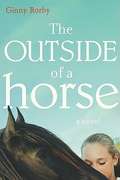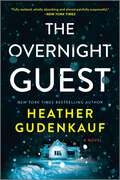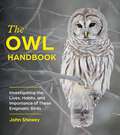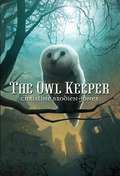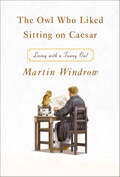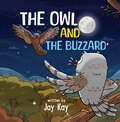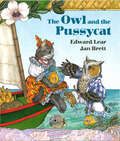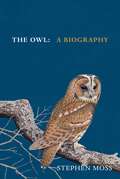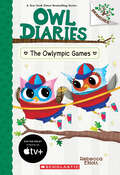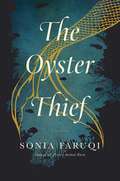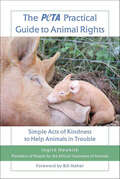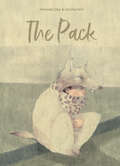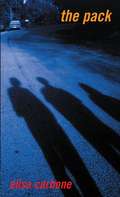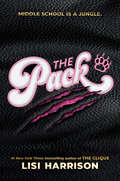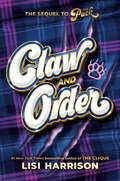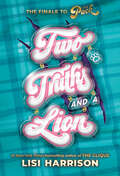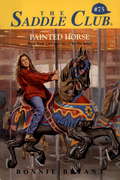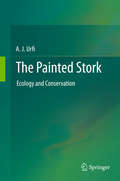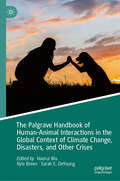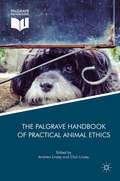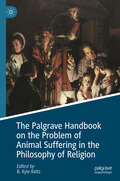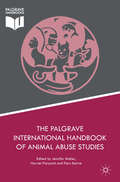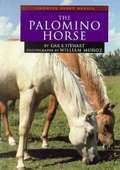- Table View
- List View
The Outside of a Horse
by Ginny RorbyHannah Gale starts volunteering at a horse stable because she needs a place to escape. Her father has returned from the Iraq war as an amputee with posttraumatic stress disorder, and his nightmares rock the household. At the stable, Hannah comes to love Jack, Super Dee, and Indy; helps bring a rescued mare back from the brink; and witnesses the birth of the filly who steals her heart. Hannah learns more than she ever imagined about horse training, abuse, and rescues, as well as her own capacity for hope. Physical therapy with horses could be the answer to her fatherÕs prayers, if only she can get him to try.
The Overnight Guest: A Novel
by Heather GudenkaufNEW YORK TIMES BESTSELLER&“Fully realized, wholly absorbing and almost painfully suspenseful...The journey is mesmerizing.&” —New York Times A woman receives an unexpected visitor during a deadly snowstorm in this chilling thriller from New York Times bestselling author Heather Gudenkauf.True crime writer Wylie Lark doesn&’t mind being snowed in at the isolated farmhouse where she&’s retreated to write her new book. A cozy fire, complete silence. It would be perfect, if not for the fact that decades earlier, at this very house, two people were murdered in cold blood and a girl disappeared without a trace.As the storm worsens, Wylie finds herself trapped inside the house, haunted by the secrets contained within its walls—haunted by secrets of her own. Then she discovers a small child in the snow just outside. After bringing the child inside for warmth and safety, she begins to search for answers. But soon it becomes clear that the farmhouse isn&’t as isolated as she thought, and someone is willing to do anything to find them.Don&’t miss Heather&’s upcoming twisty locked-room thriller, EVERYONE IS WATCHING! And don't miss these other great stories by Heather!The Weight of SilenceThese Things HiddenLittle MerciesMIssing PiecesNot a SoundBefore She Was FoundThis is How I Lied
The Owl Handbook: Investigating the Lives, Habits, and Importance of These Enigmatic Birds
by John SheweyCharismatic, intriguing, and misunderstood: The Owl Handbook provides a beautifully photographed, thoughtfully researched, and accessible guide to these complex, captivating creatures. Spot an owl that&’s long been watching your every move and darker aspects of its reputation may spring to mind: harbinger of doom, guides through the spirit world, merciless bird of prey. Mythology and superstitions have projected our fear of the unknown onto these mostly night-dwelling creatures. But these wondrous birds are so much more than shadows or silent glides through the night. In The Owl Handbook, lifelong birding enthusiast John Shewey leads us through an exploration of owls&’ cultural impact as seen in folklore and mythology, provides in-depth investigations of 19 owls of North America and a survey of 200 owls across the globe, and gives advice on how to respectfully observe and protect these enigmatic birds, brought to life by hundreds of full-color photographs.
The Owl Hoots Twice at Catfish Bend
by Ben Lucien BurmanThe Gayest Book of 1961! When Seven Stars for Catfish Bend appeared after the widely acclaimed High Water at Catfish Bend it was greeted by excited reviewers as a new Alice in Wonderland, a new Wind In The Willows. Now Ben Lucien Burman has written a third story even more delightful in its fantasy and rich humorous imagination--The Owl Hoots Twice at Catfish Bend. Like Lewis Carroll's immortal classic, it is at once a genial satire on the absurdities of our time, a rich entertainment that keeps the reader chuckling with every paragraph, and a wonderful adventure story. It is the tale of a wolf in fox's clothing and of the terrible havoc he works when the innocent and peaceful animals of Catfish Bend, always ready to help a fellow creature, rescue him from his pursuers, and then listen to his evil advice. Here again is the famous Judge Black, the kindly, motto-quoting blacksnake, who is a vegetarian and is always trying to live down the snake family's bad name; here is the elderly frog who patiently conducts the young frogs of the Indian themselves in its magic and enchantment. The beguiling illustrations by Alice Caddy, the author's wife, are a perfect accompaniment to the charm of the story.
The Owl Keeper
by Christine Brodien-JonesMaxwell Unger loved the stories his gran told him about the world before the Destruction--about nature, and books, and the silver owls. In times of darkness, the Owl Keeper would appear to unite owls and sages against the power of the dark. The time of the Owl Keeper is coming soon. Illustrations.
The Owl Who Liked Sitting on Caesar: Living with a Tawny Owl
by Martin WindrowThis memoir of the relationship between a British military historian and a Tawny Owl is “a small masterpiece of animal literature . . . [a] perfect book” (The Wall Street Journal).Mumble was so much a part of my life in those days that the oddity of our relationship seldom occurred to me, and I only thought about it when faced with other people’s astonishment. When new acquaintances learned that they were talking to a book editor who shared a seventh-floor flat in a South London tower block with a Tawny Owl, some tended to edge away, rather thoughtfully . . . I tried to answer patiently, but I found it hard to come up with a short reply to the direct question ‘Yes, but . . . why?’; my best answer was simply ‘Why not?’Martin Windrow was a war historian with little experience with pets when he adopted an owl the size of a corncob. Adorable but with knife-sharp talons, Mumble became Windrow’s closest, if at times unpredictable, companion, first in a South London flat and later in the more owl-friendly Sussex countryside. In The Owl Who Liked Sitting on Caesar, Windrow recalls with wry humor their finer moments as well as the reactions of incredulous neighbors, the awkwardness of buying Mumble unskinned rabbit at Harrods Food Hall, and the grievous sense of loss when Mumble nearly escapes. Windrow offers a poignant and unforgettable reminiscence of his charmed years with his improbable pet, as well as an unexpected education in the paleontology, zoology, and sociology of owls.“A memoir of his friendship with this singular creature, interwoven with a natural history of her species . . . [It] is all the more affecting because of its gruff understatement.” —The New York Times Book Review“Pure joy. Martin Windrow shows us the essence of a wild animal in a story as informative as a scientific paper on the species Strix aluco, but much more fun to read.” —Elizabeth Marshall Thomas, author of A Million Years with YouIncludes photographs and illustrations
The Owl and the Buzzard
by Jay KayIn a world full of wonders and wonders, oh my, Watch the owl and the buzzard Teach the world how to fly. With exceptional wings and their magical flight, Incredible things will happen at night. So follow your dreams, in a world that’s so rare, Who knows the things you can do if you dare?
The Owl and the Pussycat (Paul Galdone Classics Ser.)
by Edward LearOwl sets out to woo Pussycat in a boat laden with fruit from their Caribbean island and with a guitar at his side, ready for serenading. As they sail off across the sea, another story unfolds in the water beneath the boat. One by one, exotic sea creatures swim into the picture and small yellow fish seems to be looking for someone. Jan Brett brings the magic of the Caribbean to her exquisitely detailed illustrations of Edward Lear&’s charming poem.
The Owl: A Biography (The Bird Biography Series #5)
by Stephen Moss'BEAUTIFULLY, A BOOK ABOUT BIRDS' The Sunday Times | 'ENGAGING AND EYE-OPENING' The Countryman Uncover the life of owls through this beautiful guide to these secretive and charismatic birds from the bestselling author of The Robin, The Wren, and The Swan.Owls are among the most mysterious birds in the world. Their hauntingly beautiful calls and mostly nocturnal habits have long captured our collective imagination, inspiring more superstitions, folktales, and myths than any other group of birds. Seven species of owl - the tawny, little, barn, long-eared, short-eared, snowy and eagle owl - can be found in the British Isles (out of sixteen different kinds across Europe). They have lived alongside people for thousands of years, yet we still know so little about their day-to-day lives.Discover their fascinating lives, from the moment they first hatch, to the way they hunt their prey and how they raise the next generation. Explore the rich folklore they've inspired around the world and learn how, with a bit of luck, you can catch a glimpse of them yourself.With beautiful illustrations throughout, and expert birdwatching tips, this eye-opening biography reveals the hidden secrets of one of the world's most famous and beloved birds.
The Owls Are Not What They Seem: Artist as Ethologist (Forerunners: Ideas First)
by Arnaud GerspacherToward a posthumanist art and ethologyThe Owls Are Not What They Seem is a selective history of modern and contemporary engagements with animals in the visual arts and how these explorations relate to the evolution of scientific knowledge regarding animals. Arnaud Gerspacher argues that artistic knowledge, with its experimental nature, ability to contain contradictions, and more capacious understanding of truth-claims, presents a valuable supplement to scientific knowledge when it comes to encountering and existing alongside nonhuman animals and life worlds. Though critical of art works involving animals that are unreflective and exploitative, Gerspacher&’s exploration of aesthetic practices by Allora & Calzadilla, Pierre Huyghe, Agnieszka Kurant, Araya Rasdjarmrearnsook, Martin Roth, David Weber-Krebs, and others suggests that, alongside scientific practices, art has much to offer in revealing the otherworldly qualities of animals and forging ecopolitical solidarities with fellow earthlings.
The Owlympic Games: A Branches Book (Owl Diaries)
by Rebecca ElliottIn the next installment of thisNew York Times bestselling early chapter book series, Eva competes in the Owlympic Games!Pick a book. Grow a Reader!This series is part of Scholastic's early chapter book line, Branches, aimed at newly independent readers. With easy-to-read text, high-interest content, fast-paced plots, and illustrations on every page, these books will boost reading confidence and stamina. Branches books help readers grow! The Owlympic Games are about to begin at Treetop Elementary School! It's going to be a flaptastic week full of games, races, and owlmazing obstacle courses. Eva wants to be excited like all her other classmates--who wouldn't want to compete for a gold medal, after all? But as the Games begin, and the pressure to win starts to build, Eva is afraid of letting her team down. Will she be able to overcome her fears to compete for first place? With speech bubbles, easy-to-read text, and adorable characters, this New York Times bestselling series is perfect for newly independent readers!
The Oyster Thief: A Novel
by Sonia FaruqiTwo worlds collide when a mermaid and human man meet, plunging readers into a vast underwater realm brimming with adventure and intrigue. The mermaid’s scales were bronze, and they shimmered like hundreds of pennies arranged close together. Her immense blue-green eyes gave a look of fragility to her face, yet he found her eyes unsettling. She was leaning against a thirty-foot-long shark, which emerged from behind her and opened its mouth to reveal a great big cavern lined with hundreds of teeth—a black tunnel ready to swallow him. Coralline is a mermaid who is engaged to the merman of her dreams. But when an oil spill wreaks havoc on her idyllic village life, her little brother falls gravely ill. Desperate to save him, she embarks on aquest to find a legendary elixir made of starlight. Izar, a human man, is on the cusp of an invention that will enable him to mine the depths of the ocean. His discovery will soon make him the richest man on earth—while threatening merpeople with extinction. But then, suddenly, Izar finds himself transformed into a merman and caught in a web of betrayal and intrigue. Meeting Coralline in the ocean, he decides to join her on her quest for the elixir, hoping it will turn him human again. The quest pushes Coralline and Izar together, even though their worlds are at odds. Their pasts threaten to tear them apart, while a growing attraction adds to the danger. Ultimately, each of them faces an impossible choice. Should Coralline leave her fiancé for a man who might betray her? And Izar has a dark secret of his own—one that could cause him to lose Coralline forever. Magnificent and moving, set against a breathtaking ocean landscape, The Oyster Thief is a richly imagined odyssey destined to become a classic.
The PETA Practical Guide to Animal Rights: Simple Acts of Kindness to Help Animals in Trouble
by Ingrid NewkirkWith more than two million members and supporters, People for the Ethical Treatment of Animals (PETA) is the world's largest animal-rights organization, and its founder and president, Ingrid Newkirk, is one of the most well-known and most effective activists in America. She has spearheaded worldwide efforts to improve the treatment of animals in manufacturing, entertainment, and elsewhere. Every day, in laboratories, food factories, and other industries, animals by the millions are subjected to inhumane cruelty. In this accessible guide, Newkirk teaches readers hundreds of simple ways to stop thoughtless animal cruelty and make positive choices. For each topic, Newkirk provides hard facts, personal insight, inspiration, ideas, and resources, including: • How to eat healthfully and compassionately • How to adopt animals rather than support puppy mills • How to make their vote count and change public opinion • How to switch to cruelty-free cosmetics and clothing • How to choose amusements that protect rather than exploit animals. With public concern for the well-being of animals greater than ever—particularly among young people—this timely, practical book offers exciting and easy ways to make a difference.
The Pack
by Amanda CleyIf you try to fit in with the pack, you&’ll look the same as everyone else. You&’ll be a part of the group, but you&’ll lose parts of yourself. Eventually you won&’t even recognize yourself anymore. Breaking free from the pack isn&’t easy, but it is possible. If you find the courage to leave conformity behind, you can finally discover who you are. Resonant and haunting, The Pack imagines what happens when a human being wears wolf&’s clothing. This poetic, powerful book will start unforgettable conversations about identity, peer pressure, and finding one&’s own path.
The Pack
by Elisa CarboneAkhil Vyas, a new boy in school, reluctantly decides that in order to prevent a violent crime, he must tell Omar and Becky his secret.
The Pack
by Lisi Harrison"Girls with secret kick-butt animal powers? Yes please. This story is fast paced, hilarious, and wildly fun.&”—Melissa de la Cruz, New York Times bestselling author of The Descendants The #1 New York Times bestselling author of THE CLIQUE invites us into a new middle school—this time for girls with animal powers. The newest student Sadie might become the next Queen of the jungle after she is invited to join The Pack!Don&’t be fooled. . . . Charm House isn&’t like any other charm school. Charm stands for Center for Human-Animal Reform and Manners. Every girl who boards there has an animal light inside her that is wild and needs to be tamed.New girl Sadie just wants to stay out of trouble and blend in. When she learns she has the fiercest animal light of all, she is invited to join the group of it girls known as the Pack, led by Lindsey, the school&’s queen of the jungle. Soon Sadie is consumed by social drama and her secret feelings for an off-limits private-school boy. Charm House is supposed to protect them, but danger looms when someone starts to threaten the girls. Is the school in jeopardy—or is someone trying to tear the Pack apart?
The Pack #2: Claw and Order
by Lisi HarrisonSadie and her best friends are back in book two of this series about girls with animal powers. The Pack seems stronger than ever but Sadie has a secret that could claw its way out. Sadie thought joining the Pack would be the wildest thing to happen to her this year but the school year is becoming even harder. On top of classes Sadie has to navigate her growing feelings for her crush, taming her powers during cheer practice and trouble making hyenas trying to take her crown. Then there is the massive secret she is keeping from her BFF Lindsey--that could destroy their friendship and The Pack as they know it. Will the shocking truth come out to bite them?
The Pack #3: Two Truths and a Lion (THE PACK #3)
by Lisi HarrisonSadie and her pack of best friends are back one last time in this series finale about girls with animal powers from the #1 New York Times bestselling author Lisi Harrison.Sadie and her friends should be preparing for end of the year finals but they are about to go on a mission to save one of their own. She was taken from school and they know just where to find her. Things are all going according to plan. But suddenly there's a new girl at school—with the same powers as Sadie—who claws her way into The Pack. But this girl is fiercly confident and soon wants to lead them her own way.Not wanting to start drama, Sadie bites her tongue but as their rescue mission begins these two girls find themselves butting heads. To make matters worse Sadie's BFF Lindsey seems to be losing focus...and the hyenas have figured out they left school and are on their tail! Can they navigate their secret mission and friendships to bring back their fallen pack member? Or will this adventure change them forever?
The Painted Horse (Saddle Club #75)
by Bonnie BryantStevie Lake is going on a class trip to New York City. While Stevie has visions of hanging out in Greenwich Village, her teacher has other ideas--long, boring lectures and a test. Well, Stevie has her own plans. She shakes her classmates and sets off to explore the Big Apple on her own. She ends up at the carousel in Central Park, where she meets not just people, but horses--including mounted policemen and riders from a nearby stable.When Stevie's class wanders into the park, they don't have such a great adventure. In fact, they get lost. Now it's up to Stevie and her new friends to save the class and stop the school trip from turning into a disaster.
The Painted Stork
by A. J. UrfiThe book will cover the entire range of the Painted Stork--beyond its stronghold in India and Sri Lanka to other countries--E Asia as well. For the sake of comparison, relevant information will be included about the other species of storks--both solitary as well as colonial, of Asia, as well as those in other parts of the world. Certainly plenty of references will be made about the work done on the American Wood Stork. Studies are underway in order to better understand the role of the monsoon rains on the nesting pattern of Painted Stork, besides attempting a review of the global status of the species. The former is likely to be of interest in augmenting our understanding about how global climate change is going to affect birds across India and the second is likely to raise interesting points about the distribution of species and their ranges. Both these studies will be carried through 2009 and should hopefully be included in the proposed book. Naturally, the focused interest in field research on the Painted Stork has resulted in accumulation of considerable information on this particular species, which is beyond the information contained on some standard Indian and international works and ornithological texts. The author hopes to include the entire spread of information of this species--from its systematics, evolution, distribution, ecology to its role in human culture as well as its association with mythologies. In other words, topics have not been restricted to the areas of the author's research but have spilled over into areas of anthropology, ecology, conservation, etc.
The Palgrave Handbook of Human-Animal Interactions in the Global Context of Climate Change, Disasters, and Other Crises
by Sarah E. DeYoung Haorui Wu Kyle BreenThe increasing frequency, scope, and magnitude of global extreme events affect humans and their animal co-inhabitants on our shared planet. This book features a first-of-its-kind, comprehensive text addressing human-animal interactions (HAIs) in the context of climate change, disasters, and other crises. This book presents international professionals&’ HAI-driven leading ideas, debates, approaches, and promising efforts, providing a range of perspectives across the entire disaster cycle from the Global South and North. Their knowledge, experience, and expertise contribute to a nuanced understanding of disaster-specific HAIs, shedding light on enhancing human-animal welfare, promoting trans-species justice, and building resilience. Students, researchers, educators, practitioners, policymakers, and others can apply this expertise to enhance human-animal welfare and resilience in the global disaster settings. Chapter "Working Equids in Disasters: Local Concerns and Inspirations" is available open access under a Creative Commons Attribution 4.0 International License via link.springer.com.
The Palgrave Handbook of Practical Animal Ethics (The Palgrave Macmillan Animal Ethics Series)
by Andrew Linzey Clair LinzeyThis handbook provides an in-depth examination of the practical and theoretical issues within the emerging field of animal ethics. Leading experts from around the globe offer insights into cutting edge topics as diverse as killing for food, religious slaughter, animal companions, aquariums, genetic manipulation, hunting for sport and bullfighting. Including contributions from Lisa Johnson on the themes of human dominance, Thomas White on the ethics of captivity, Mark Bernstein on the ethics of killing and Kay Peggs on the causation of suffering, this handbook offers an authoritative reference work for contemporary applied animal ethics. Progressive in approach, the authors explore the challenges that animal ethics poses both conceptually and practically to traditional understandings of human–animal relations. Key Features: · Structured in four parts to examine the ethics of control, the ethics of captivity, the ethics of killing and the ethics of causing suffering · Interdisciplinary approach including philosophical, historical, scientific, legal, anthropological, religious, psychological and sociological perspectives · Focussed treatment of practical issues such as animals in farming, zoos and animal experimentation The Palgrave Handbook of Practical Animal Ethics is an essential resource for those with an interest in the ethics of modern-day treatment of animals as well as scholars, researchers and advanced students in zoology, philosophy, anthropology, religious studies and sociology.
The Palgrave Handbook on the Problem of Animal Suffering in the Philosophy of Religion (The Palgrave Macmillan Animal Ethics Series)
by B. Kyle KeltzAtheists argue that animal pain, disease, suffering, and death cause a problem for theism because they believe that an all-knowing, all-powerful, and all-good God would not use millions of years of animal suffering just to make a world suitable for humans. Animal suffering was not a concern for theism through the medieval period, but it has been increasingly discussed in philosophy of religion since modern times, and there is especially a large and growing amount of literature on this subject that has been published in the last few decades. This handbook serves as a guide for those interested in the literature on the problem by bringing together experts in the philosophy of religion, theology, environmental ethics, and the philosophy of animal minds. It not only presents major formulations of the problem of animal suffering and major theodicies, but it also discusses metaethical issues regarding animal suffering, the question of animal consciousness and self-awareness and their implications for animal suffering, and what implications available theodicies might have for animal ethics.
The Palgrave International Handbook of Animal Abuse Studies
by Piers Beirne Jennifer Maher Harriet PierpointThis Handbook fills a large gap in current scholarly literature on animal abuse studies. It moves considerably beyond the debate that has traditionally dominated the discourse of animal abuse - the link between one-on-one interpersonal violence and animal abuse - and towards those institutionalised forms of animal abuse which are routine, everyday, socially acceptable and invisibilised. Chapters from expert contributors raise issues such as: the use of animals as edibles; vivisection; animal sexual assau< animals used in sport and hunting; animal trafficking; the use of animals by youth gangs, by other groups and in war; species extinction; and the passivity of national and international organisations in combating animal abuse. The Handbook is a unique text: it is essential reading for students, researchers, academics, activists and policy makers involved in understanding and preventing animal abuse.
The Palomino Horse (Learning About Horses)
by Gail B. StewartDiscusses the history, physical characteristics, and uses of the horses known for their unique gold coloration and white mane and tail.
